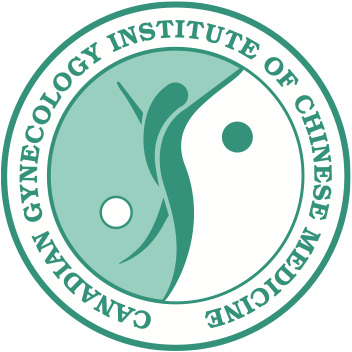Menstrual Pain, Dysmenorrhea, is one of the most common gynecological problems among women in their reproductive years.
This article is a review of various underlying causes of menstrual pain and cramps. It is written for the general public (including those suffering with dysmenorrhea) and also serves as a review for TCM Practitioners who treat menstrual concerns.
For a more information, including recommended herbs and a full discussion of both Primary and Secondary Dysmenorrhea, see the full article at https://cgicm.ca/2012/04/ouch-cramps-pelvic-pain-and-chinese-medicine/
On November 5th, 2017 – Yuxiang Wang R.TCMP, the Director of the Radiance TCM Clinic and the Canadian Gynecology Institute of Chinese Medicine, will lead a full day online training in the diagnosis and treatment of Dysmenorrhea for TCM Practitioners. Sharing her decades of experience, we hope that practitioners will deepen their understanding and insights about dysmenorrhea and improve their clinical results. For more information visit our events page Treating Dysmennorrhea with Chinese Medicine
Dysmenorrhea is generally an acute type of pain with a sudden onset, a sharp rise and a short course. There are different types and causes of dysmenorrhea.
A severe type of cramping is commonly associated with muscular contraction or the obstruction of a hollow viscus.
Pain perceived over the entire abdomen suggests generalized irritation in the peritoneal cavity.
A cyclical pain, dysmenorrhea usually appears within 1-2 years of menarche, a woman’s first period. The disorder tends to affect younger women but may persist into the 40’s.
Primary Dysmenorrhea:
Primary Dysmenorrhea is pain without pelvic pathology and will be the focus of this article.
The pain of primary dysmenorrhea usually begins a few hours before or just after the onset of a menstrual period and may last up to 48 to 72 hours.
The pain consists of suprapubic cramping that may be tender to palpation, and may be accompanied by lumbosacral backache, pain radiating down the anterior thigh, nausea, vomiting, diarrhea, and rarely syncopal episodes.
The pain of dysmenorrhea is colicky in nature and is improved with abdominal massage, counterpressure, or movement of the body. Bowel movements are generally normal and there is no upper abdominal or abdominal rebound tenderness, while there is generally uterine tenderness. Upon palpation and movement of the cervix, severe pain is absent and the pelvic organs are normal.
With diagnosis, it is important to rule out any underlying pelvic pathologies and confirm the cyclical nature of the pain.
Western medicine treatment usually includes aspirin or ibuprofen. Up to 90% of women with primary dysmenorrhea find relief with oral contraceptives.
Chinese medicine, on the other hand, differentiates types of primary dysmenorrhea based on symptoms. Women benefit from natural treatments that are suited to their unique situation.
In Chinese Medicine, the patterns that are associated with menstrual pain are:
-
Qi Stagnation & Blood Stasis:
pain starts a few hours before menses or on the first or second day of menstruation. There is lower abdominal pain refusing pressure, unsmooth flow of menses with clots, distending pain in the chest, ribside and breasts, a purplish tongue and a deep taut pulse.
-
Cold Wet Accumulation:
pain starts a few hours before menses or during menstruation and is alleviated with the application of heat. Autonomic reflex response may occur, there is a small amount of menstrual flow that is dark red in colour. There can also be cold hands and feet, aversion to cold, loose stools, light purplish tongue with a white-moist or white-greasy coating and a deep-tense pulse.
-
Damp Heat Obstruction:
pain starts before or during menstruation. It is in the lower abdomen and is stabbing, distending or burning in nature. Menses are dark red in colour and there can also be yellowish vaginal discharge. There may be a low fever, reddish tongue, yellow or yellow-greasy coating, and a stringy or slippery pulse.
-
Qi & Blood Deficiency:
the pain during menstruation and usually lasts for longer. It is generally dull, continuous or bearing down in nature and alleviated with applied pressure. There is also a pale complexion, dizziness, palpitations, fatigue, a light red tongue and a weak pulse.
-
Liver & Kidney Yin Deficiency:
- the pain is longer lasting and is dull in the lower abdomen and lower back. This is seen with dizziness, tinnitus, a light red tongue and a weak pulse.
When working with an R.TCMP or R.AC the practitioner, he or she will determine what patterns are involved in your experience. As well, other considerations are taken into account to formulate the best treatment, which could include acupuncture, herbal remedies, or both. A woman’s stress level, general health, and medical history are all important information.
Chinese Medicine offers excellent results in the relief of dysmenorrhea. Even better, since menstrual pain can point to a larger underlying imbalance ( the patterns listed above), treatment can not only relieve menstrual pain but can also improve general health and balance.
-Excerps (from the original article by Carolyn Proedoehl, R.TCMP) and Dawn Aarons
References:
Wang, Yuxiang. (2010). Integrated Gynecology Course Notes. TorontoSchoolof Traditional Chinese Medicine.
For a more information, including recommended herbs and a full discussion of both Primary and Secondary Dysmenorrhea, see the full article at https://cgicm.ca/2012/04/ouch-cramps-pelvic-pain-and-chinese-medicine/
To book an appointment at our midtown Toronto Clinic, or for online support from The Radiance Chinese Medicine and Wellness Centre call us at 416-644-1937 or email to info@radiancetcm.com

